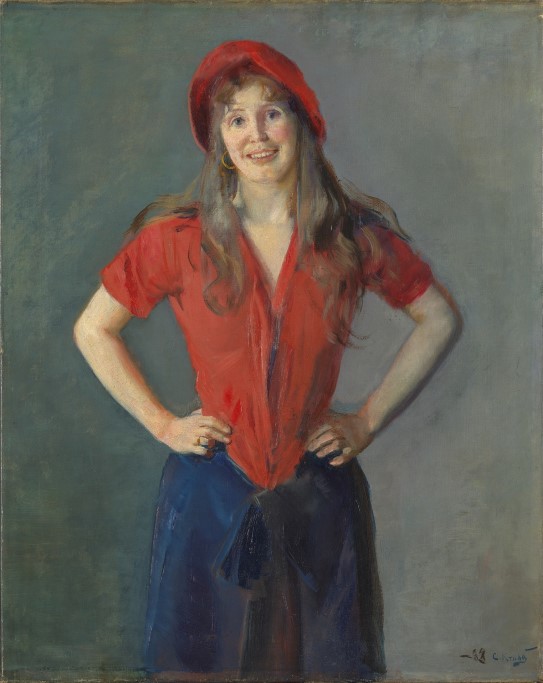The Artist Oda Krogh
Christian Krogh
Transcription
Narrator:
28-year-old Oda Krohg smiles broadly and self-confidently at the artist standing behind the easel on this summer day in 1888. No doubt because the portrait was being painted by her fiancé, Christian Krohg. Her tumbling hair and informal clothes reveal a private moment between the two artists, just months before their marriage.
Mai Bente Bonnevie:
And I'd like to praise Christian Krohg because he really sees Oda – just as I believe she liked to appear: open, friendly, free – and happy in life.
Narrator:
That’s the artist Mai Bente Bonnevie, who campaigned for the rights to education, equal pay and elective abortion when 1970s feminism arrived in Norway. She believes that many women found great inspiration in this portrait of Oda Krohg.
Mai Bente Bonnevie:
We could identify with Oda and I think we liked to be portrayed as looking like her.
Possessing the same assurance that she shows by standing with her hands on her hips.
And that precise shade of red was very appropriate to all our marches and demonstrations. Of course it symbolizes life, but also grief, pain, love — and blood.
Narrator:
Oda Krohg challenged prevailing ideas about the role of mother and housewife by making radical choices about her life. She got divorced, had children outside marriage, and sought after free love and truth.
Mai Bente Bonnevie:
I find it very moving that Oda had this independent courage to break with expectations, and to break with bourgeois life. That she followed her inner voice.
And also, not least, that Oda, in spite of all the difficulties she faced, succeeded in unifying her artistic ambitions and career with motherhood.
And that's very often a dilemma that very many women have; how to achieve harmony between their work and personal lives. To succeed in doing this day in and day out. Because it's everyday life that we have to get right.